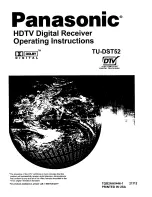
TECHNICAL SUPPLEMENT FOR THE SR-160 & SR-500 by WDØGOF August 2010
12
MISC NOTES
TUNING FOR PLATE I DIP
In order to operate the finals in the most efficient manner the plate loading should be adjusted for plate current dip.
When the rig is properly neutralized the power out
peak
and the plate I
dip
will occur concurrently. The only way
to monitor the plate dip is to use an external meter connected to TP-201 and TP-202 in the power supply.
See
paragraph 8-3 in the manual.
I keep a meter attached to the power supply when ever operating an SR-150, SR-160
or an SR-500.
See page 5 of this document.
Also, I always tune for the plate I dip, regardless of the peak power
point.
When the plate dip and power peak differ by more than 15 or so watts I re-neutralize. Be very suspicious any
time the plate I dip exceeds 450 mills on the SR-500 and 300 mills on the SR-160. This is of extreme importance
when using 6DQ5’s in place of the 8236’s in the SR-500. To keep plate dissipation at a minimum you must be
tuned to the plate dip.
RX RF AMP MOD
The receiver gain on the 160 and 500 is ok, but does not quite match the gain of the rest of the SR series. This is a
simple fix. Simply replace V1 the 12BZ6 with a 12DK6, it’s a direct replacement. This will provide from 3 to 6 db
more gain. The AGC tracking normally runs in the order of 5 to 8 times wider than spec. So even with the
additional gain in the front end it will still meet the AGC figure of merit spec
RIT/CAL
The RIT/CAL ckt is virtually the same for the SR series gear from the SR-150 thru the SR-2000. The advertised
purpose of the RIT was to allow you correct for contacted station RX/TX off set of up to 3Khz.
The RIT (receiver incremental tuning) function is used to offset the transmitter and receiver frequencies.
Even if your rig is perfectly tuned and on frequency those you operate with may not be. A difference of just a few
cycles can cause you to walk up or down the band. When the RIT function is turned on the transmitter is still
controlled by the CAL control but the receiver frequency is varied by the RIT CONTROL. This allows you to fine
tune your receiver without moving your transmitter.
The CAL function in the SR-160 and 500 is needed to correct any slight error in the HET osc. The 3400Khz
heterodyne oscillator is switched on when the 40 meter band is selected. This xtals has no trim adjustment. During
assembly and test, at the factory, xtals were hand selected for minimum error. However any error of a few cycles or
more can be detected by the ear. If everything is aligned and tracked correctly the CAL operation corrects for the
entire band. The CAL operation must be performed each time you change bands and should hold until the band is
changed again. As long as the carrier oscillator (the 5200Khz) is on frequency, then once either the 80 meter or 20
meter band is calibrated the other will be calibrated. If you calibrate on the 80 meter band and the 20 meter band is
off frequency you have a circuit failure.
NOTE
: The specs are a little vague on the tolerance for the oscillators in the SR series. The overall spec for
maximum band to band shift is
2 kHz
which seems like a lot. However I did find one spec sheet that stated that the
minimum swing on the CAL and RIT controls is +/- 3 kHz another /- 4.5 kHz. This is more than ample to
off-set any osc differences if they are within these specs.
The CAL ADJ and the RIT CONTROL are both used to fine tune the bias voltage on the vari-cap (also
referred to as a veractor diode) in the VFO. With the RIT off both the TX and RX are fine tuned by the CAL ADJ
pot. With the RIT ON the RIT CONTROL fine tunes the RX and the CAL ADJ controls the TX. These two pots are
in parallel in the vari-cap voltage divider network and are switched by K1. On a perfectly aligned band when the
CAL ADJ pot is in its electrical center position then the RIT CONTROL will also be in the center of its rotation.













































